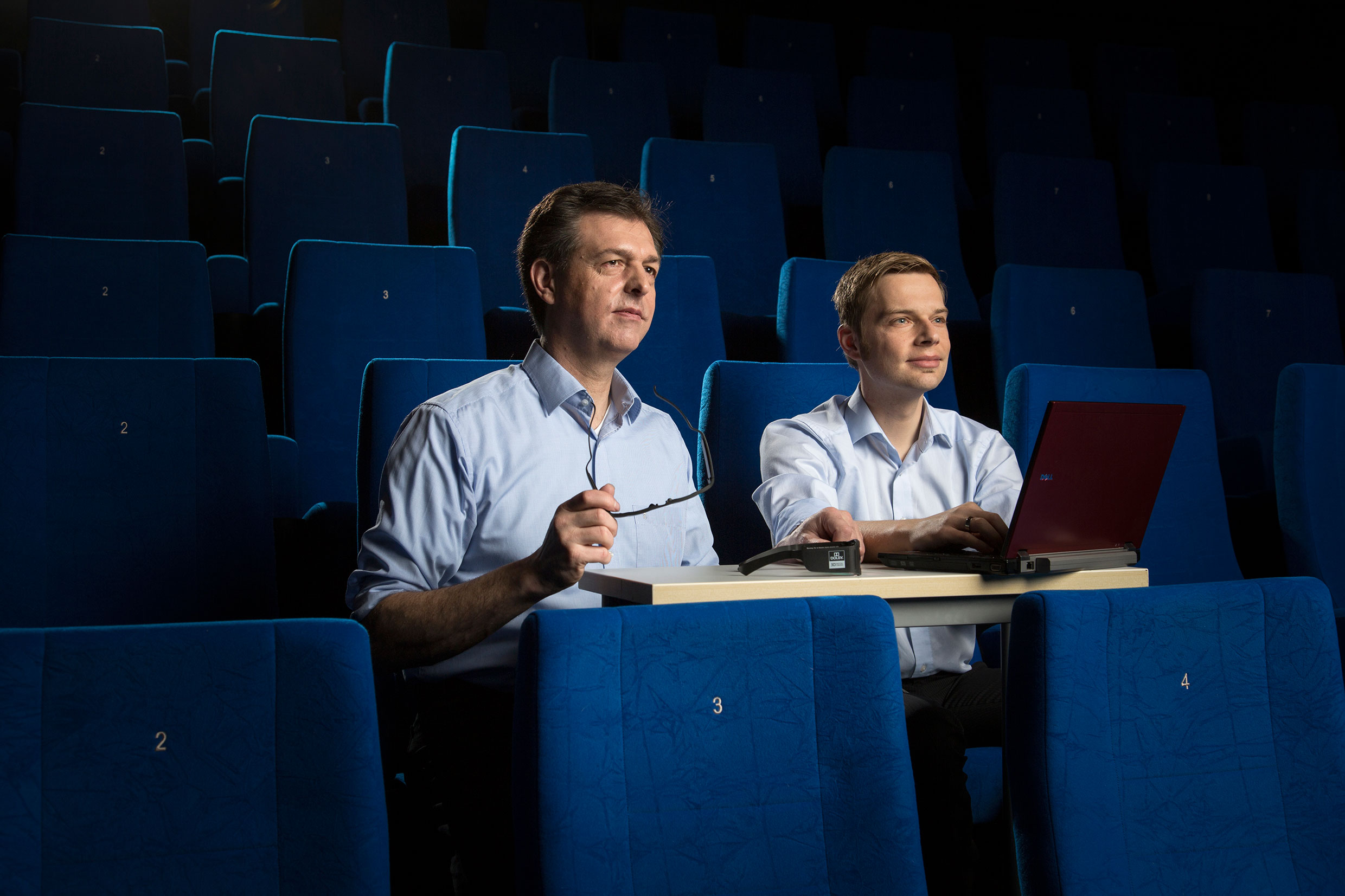The digital film reel
Instead of heavy rolls of film, digital film copies are sent to movie theaters these days. With the easyDCP software, these digital packages can be easily created in the required standard so that the digital film can run in any theater.

For more than a hundred years, analog technology dominated the cinema. Moving pictures were captured on film made from celluloid or polyester, and uniform standards applied worldwide. Each film strip was 35 millimeters wide and perforated along the outside edges. This way, it could be shown in any theater. Distribution of digital movies has changed all that: instead of sending analog reels of film, movie theaters receive DCPs (Digital Cinema Packages) via hard drive or satellite that include not only the encoded digital video and audio data but also subtitles in multiple languages.
Digital cinema needs universal standards too. Only then can digital films be shown in any cinema worldwide; In 2005, the six largest Hollywood studios defined the DCI standards, the technical specifications for digital cinema. At the studios’ request, researchers at the Fraunhofer Institute for Integrated Circuits IIS in Erlangen have created international test procedures for compliance with the specifications of the DCI standards. In order to ensure that digital film copies meet these standards, the experts at Fraunhofer IIS have developed a software for creating DCPs suitable for all playback devices that work reliably on all cinema systems.
Simple and clear operation
“While developing easyDCP, we really concentrated on keeping operation simple and clear,” says Dr. Siegfried Foessel, director of the Moving Picture Technologies department at Fraunhofer IIS. That’s a concept that users found persuasive. In very little time easyDCP became the market leader; more than 1000 customers already use the software. Meanwhile large companies have started integrating easyDCP software into their products including Quantel, Drastic, and Blackmagic Design.
“We’ve tested easyDCP-created cinema packages on any number of playback devices and continuously improved the software,” explains Heiko Sparenberg, head of the Digital Cinema group at Fraunhofer IIS. As for why the software has established itself so successfully on the market, “Feedback from our users has played an important role,” he explains. The software enables not only the largest studios, but also smaller, independent producers and film makers to create their own digital cinema packages. Post-production companies, film producers, distributors and film festivals - all profit from the comprehensive software functions, such as the adding of subtitles and audio tracks in different languages or the support of 3D formats or 4K resolution. At the Berlin International Film Festival, the software is used to test the quality of digital film copies from around the world, so that flawed cinema packages can be quickly identified andprepared and validated for proper screening.
For their work on the topic “Digital cinema conquers the world – software for creating digital cinema packages enables digital cinema’s breakthrough” Dipl.-Inf. Heiko Sparenberg and Dr.-Ing. Siegfried Foessel received this year’s Joseph von Fraunhofer Prize.